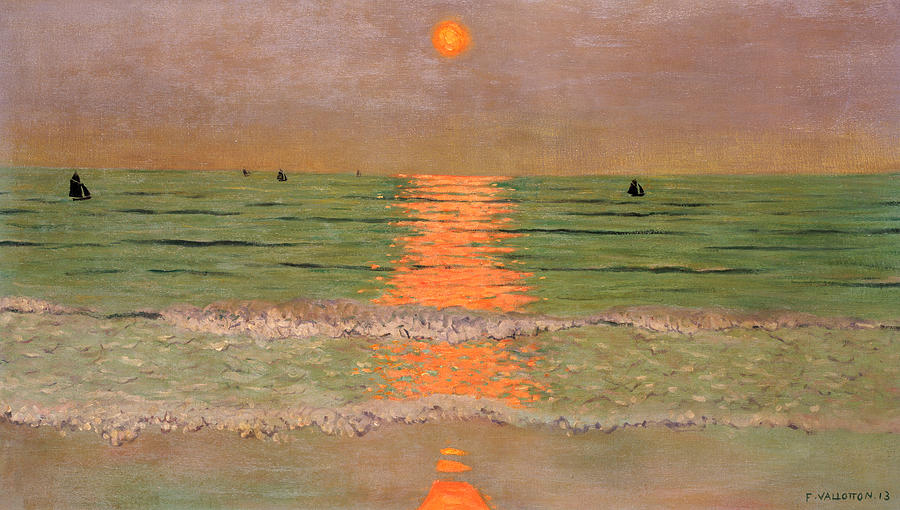
Look a little closer, however, and an awkward stiffness in the woman’s neck is echoed by the backwards roll of her tightening shoulders. At first glance, the scene seems innocuous enough, tender even: a man and woman, dressed to the nines, are locked in close, as if reliving the romantic embrace of the final dance they’d enjoyed earlier that evening before returning home. Take, for example, Vallotton’s intriguing gouache-on-cardboard interior, La Visite (The Visit) (1899) – one of the stand-out works on display in the exhibition. The worlds that Vallotton conjures, whether in word or image, are invariably defined by a conspiracy of shadows.

But are we really responsible for the misdemeanours of our silhouettes? Is the shape of our lives determined as much by the consciousness of shadows as it is by the intentional actions we deliberately take? As the novel unfolds, Verdier’s ill-starred shadow hangs over one suspicious incident after another – from the death of an engraver (who accidentally stabs himself with a copper burin when spooked by Verdier’s presence) to that of an artist’s model, who slips when reaching for Verdier’s hand and falls fatally into a scorching stove. It was, after all, some dark aspect of Verdier that had, in a sense, whether consciously or not, lunged forward and tripped his friend up, causing his injuries.
+Part+of+the+Town+of+Pont-Audemer.jpg)
Was Verdier responsible? Vincent thought so, and before long everyone else did too.


 0 kommentar(er)
0 kommentar(er)
